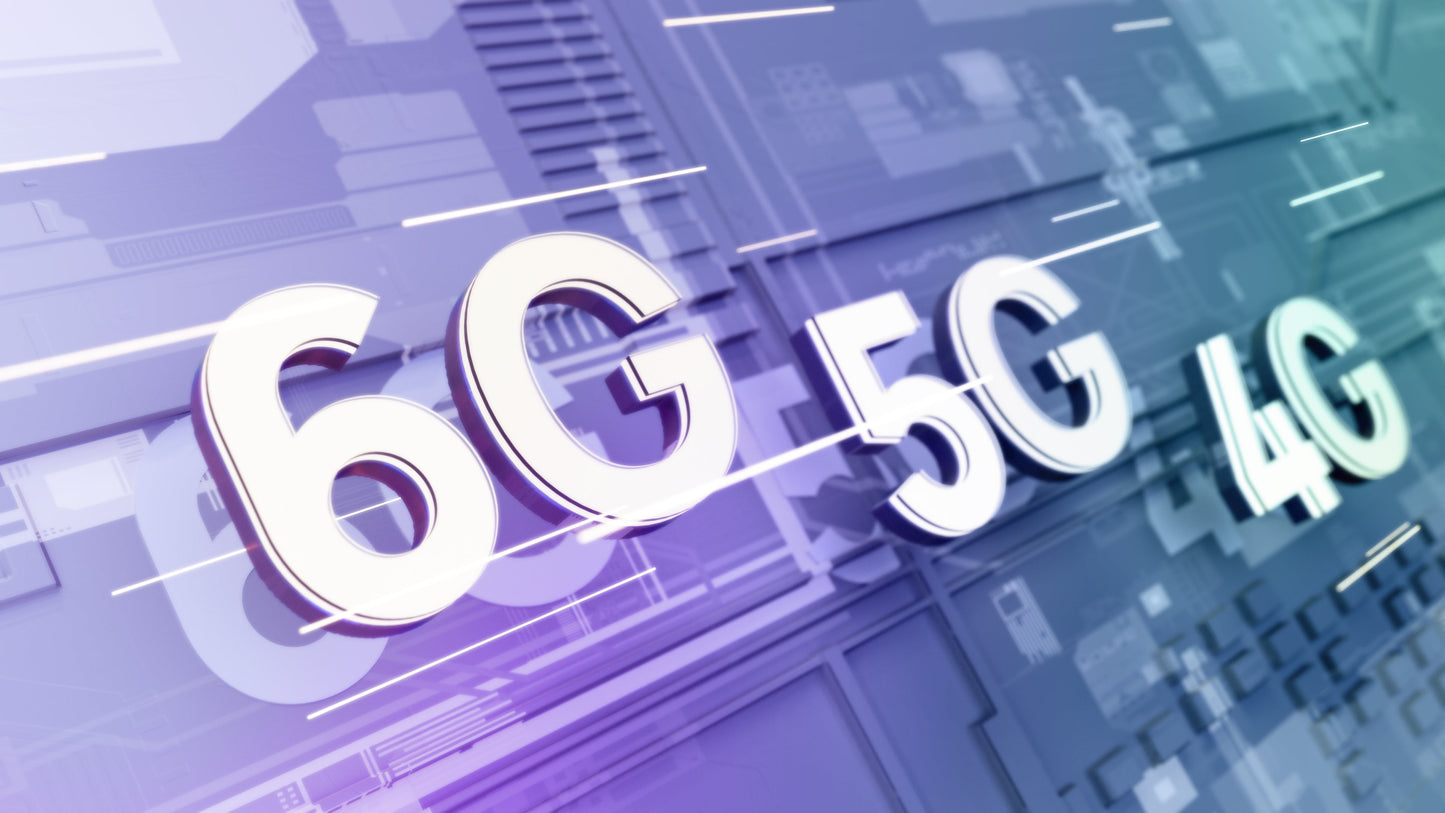
5G finally seems to be in full swing, whether we like it or not, and we are all adjusting in our own way. Coping with this new technological element will look different for each of us. Many of us are choosing to stay in the cities and fight to bring awareness of the dangers of EMFs and 5G, or even to affect change in local legislation to prevent new cell towers from being built. Many others, especially the more sensitive ones, are moving further and further from the cities into rural areas to seek out a personal sanctuary from the ever increasing harmful frequencies. Awareness of EMF protection solutions is also increasing rapidly, as many people are taking precautionary measures to protect themselves and their families from the exponentially greater EMF onslaught that 5G has brought, by using EMF protection devices like Blushield. Many people are also finding ways to protect themselves nutritionally, utilizing specific foods, herbs and supplements, especially substances with special and potent antioxidant compounds that can reduce and buffer the oxidative stress caused by EMFs.
So we are all adjusting to the presence of 5G in our lives in various ways. Then one day, you start hearing all this hype and excitement about 6G, or even 10G, being available now! This is a confusing and overwhelming message to process if we feel like we’ve finally found our strategies to cope with 5G. It makes you feel like they’re moving so fast that there’s no way you can keep up!
Our intention with this article is to clear up the hype and misleading information, and examine what’s actually true and what’s just marketing terminology designed to sell products and services instead of truly and accurately educating the public about current technology.
Xfinity 10G – are they already making 5G exponentially more powerful?
You may have heard about the Xfinity 10G service that is now available. Comcast (who provides the service) purchased advertising slots for their Xfinity service during the Super Bowl, so it has inevitably become all the rage of new internet services.
Since 5G is designed to be exponentially faster than 4G wireless service, does this mean that Comcast has broken through into hyperspace and jumped way ahead of everyone else? If so, is this service going to expose us to far more EMFs than the current 5G?
Not at all! The truth is, the ‘10G’ in the brand name is just a clever, and very misleading, marketing term.
You may know already that 5G means 5th Generation, referring to the fifth time that wireless technology has been redesigned and upgraded to support faster speeds and higher capacity data transfer.
10G, the term that Comcast is using for their new cable internet service, Xfinity, refers to the 10 gigabits per second (Gbps) download speeds that they strive to eventually provide to their customers. It’s not a wireless service at all, beyond the Wifi router that’s used to broadcast the service within the home of a subscriber. The actual internet service is delivered to the home through the same old fashioned coaxial copper cable wiring that gave us cable TV – just at much faster speeds.
It is obvious that this marketing term was created to make the product sound way more impressive than it actually is. It’s misleading and confusing, unless you know exactly what it’s referring to, and is meant to create massive demand for what sounds like a cutting edge service. The truth is, this service cannot even offer anything close to its implied-via-advertising 10 gigabits per second download speeds – the maximum speed, if you get the most expensive plan they offer and it happens to be available in your area, is only 1.2 gigabits per second! Most plans they offer are considerably slower than that.
Besides the Wifi router that is almost always used to distribute this cable service to all the connected devices in the home, you will not be exposed to more EMFs from this service. The Wifi frequencies used to broadcast this cable service are within the usual Wifi range of 2.4 to 6 gigahertz (GHz), which is in the same frequency spectrum as mid band 5G. Since Wifi routers have a very small coverage area, then unless you have signed up for this service yourself, you won’t be getting exposed to much or any of the EMFs from the Wifi… maybe a little bit if your neighbor has the service and you can pick up their Wifi signal.
Another helpful thing to be aware of is if you get your internet through a cable network (or a fiber optic network), you always have the option to wire all your devices using ethernet cables, since all Wifi routers and most computers have ethernet ports. This will drastically reduce your daily EMF exposure, since there won’t be ambient radiofrequency radiation in the airspace of your home at all times. It will be concentrated and channeled through the cables instead of transmitted wirelessly.
Xfinity is claiming faster speeds than 5G wireless internet services, which is quite an easy accomplishment, since any up-to-date wired internet service will always be faster than wireless. Any copper cable internet, and fiber optic internet, are much better choices – for faster speeds AND for your health – than getting all your internet from the nearest 5G tower. It’s even better if you forego the Wifi and connect your devices directly through ethernet cables!
Another thing to note, if you’re starting to think this Xfinity service sounds great, is that there are several other cable service providers who are offering around the same speeds, or even faster speeds. Cable and fiber optic wired internet connections have always been, and always will be, faster and more reliable than wireless. The Xfinity cable service is just now choosing to highlight that they are faster than 5G, by making potential customers think they’ve revolutionized tech with their ‘10G’ service, which is really just about the same quality service as all other current cable and fiber optic internet options.
One more caution, if you’re considering signing up for a cable internet service like Xfinity, is that the Wifi options they provide will increase your EMF exposure because they run all three Wifi frequency bands – 2.4 GHz, 5 GHz and now also 6 GHz – simultaneously, to limit interference between devices and therefore increase speeds. However, any cable or fiber optic internet service, including Xfinity, could be a great choice if you use ethernet instead of wireless, as you will be able to avoid the increased Wifi band exposures.
What about 6G – is it here yet?
Another issue lately is there’s a lot of talk about 6G being already available in various places. 6G refers to 6th Generation wireless technology, the planned upgrade to the currently utilized 5G.
The first important thing to realize is that 6G is simply a marketing term, and what’s more relevant is what they actually mean by 6G – what frequencies are being used, how much antenna density needs to happen, and other aspects of the nature of 6G versus the current 5G.
According to Next G Alliance, who are spearheading wireless technology upgrades in the United States, plans to begin implementing 6G will start in 2030, at the very earliest. Even then, it will take many years to fully transition from the current 5G (which is still heavily reliant on 4G infrastructure) to 6G, and the two will coexist for many years.
Theoretically, 6G will implement speeds from 95 GHz up to 3 THz (terahertz). In reality, 6G doesn’t even exist yet. There are several problems that need to be overcome for these kinds of speeds to become a reality. The main issue with millimeter waves (95 GHz and higher) is they have a very short range, and are easily blocked by solid objects. The faster the frequency, the tighter its waveform is, so it just doesn’t have the width to move around objects like trees, or even to penetrate denser atmospheric conditions like rain or even high humidity. Any frequency beyond 300 GHz (the maximum frequency that 5G plans on utilizing) is considered to be within the far infrared spectrum, and only has a range of several meters. If these frequencies were actually utilized, to provide uninterrupted service there would have to be antennas or repeaters placed every several meters! This would be unimaginably expensive and unsightly.
The most major hurdle to higher capacity wireless technology that tech companies are completely ignoring is the health effects. Even just the 5G that has been implemented so far, which is still only a small fraction of its full capacity, is causing health crises for a large number of people who didn’t previously realize they were sensitive to EMFs. As usage of higher frequencies (centimeter to millimeter waves) begins to happen in more places, and densification of antenna numbers continues, there will likely be a cascading effect of health issues that people will eventually realize is being caused by radiofrequency radiation exposure. The planned widespread usage of millimeter waves in the high gigahertz to terahertz range that 6G proposes could result in such large scale health crises that there simply won’t be enough people feeling healthy and functional enough to utilize and enjoy the services, ultimately putting the telecoms out of business.
Will my Blushield still protect me when the next wireless generations come along?
We updated our technology a few years ago, in response to the anticipated 5G rollout, to protect from frequencies up to 300 GHz. Previously, Blushield devices would emit a biologically coherent scalar field for a couple seconds at a time, then shut off until 30 seconds later, when the field would be emitted again for a couple seconds. For most types of EMFs, this on-and-off pattern offered plenty of coherent field exposure to protect the body.
However, centimeter and millimeter waves, as well as the beamforming nature specific to 5G creates a much more concentrated, intense effect on the body. Our response to this was to add another microprocessor, in addition to the classic Blushield on-and-off waveform, and this extra microprocessor produces a continuous scalar field based on Phi ratio patterns. The two microprocessors work in tandem, and the continuous field holds the body’s entrainment much more effectively in the presence of intense EMFs, like close range 5G.
Currently, 5G rarely operates past the 40 GHz spectrum, and usually at much lower frequencies than that (10-22 GHz seems common). While theoretically 5G will reach frequencies up to 300 GHz, there are significant limitations to the practicality of this, as we explained previously. The proposed 6G is unlikely to reach anywhere near 300 GHz for quite a while after its implementation. So for now, and throughout the next decade or longer, if you have the appropriate strength dual band home and portable devices for your overall EMF exposure levels, you are well protected against the frequency ranges currently in use!
The main concern at this point is antenna densification. That means adding more and more antennas to any given area, to provide continuous coverage for the shorter and more vulnerable wavelengths that 5G uses. The way we monitor antenna densification in any given area is by using the Antenna Search website. You can enter any address to find out how many cell towers and antennas are currently within a 3 mile radius of that address. Over the past few years since the 5G rollout began, we have noticed a considerable increase in antenna numbers almost everywhere.
All our dual band devices will protect from frequencies up to 300 GHz, but you will want to make sure that the Blushield model you have produces a field of a strong enough amplitude (strength) to match or exceed the density of EMFs you’re exposed to. That way, your body’s cells will be able to perceive (and entrain with) the Blushield instead of reacting to the harmful EMFs.
Please read our Blushield Product Guide to find out which Blushield home and portable models will give you optimal protection for your living situation and needs.
If you want to "future proof" to ensure that your Blushield model is strong enough to protect you well into the future, especially if you currently live in a high EMF urban area, choosing one of our strongest home models is a great move. There are no downsides to having a Blushield device that's stronger than the minimum strength you need right now, and there are a lot of benefits to planning for the future by acquiring a stronger Blushield model now.
For excellent protection if you're concerned about 5G densification and the eventual 6G rollout in the future, going with our heavy duty C1 Ultimate Cube would be a great choice. For even more robust protection, our newest models — the EVO Cube and EVO Pyramid — will give you the utmost protection possible from an EMF protection device, and may also provide additional benefits such as deeper sleep and an increased feeling of well-being.
To learn more about the nature of 5G and all of the implications of its use, please read our 5G article:
5G Explained and What It Means for Health and Humanity
In conclusion, you don’t need to worry much about additional EMFs from either 6G or the so-called “10G”. Just make sure your Blushield model is strong enough for your overall EMF exposure, switch to wired internet (instead of Wifi) if you can, and don’t fall for the telecommunications companies’ marketing hype.

